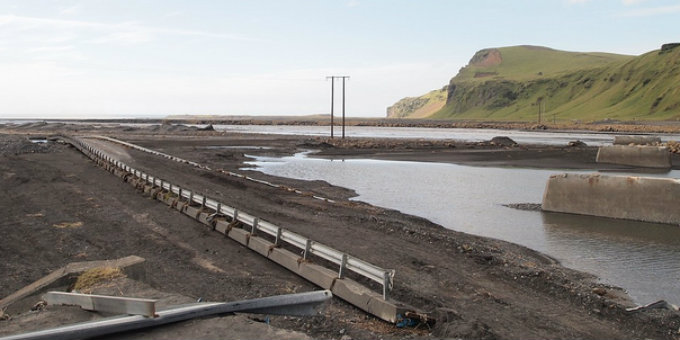
The devastation after a massive flooding in Mulakvisl glacial river. The wreckage you see used to be a pretty solid bridge. This event closed down the Ring Road in Iceland for a week two years ago. PIC Pavel Karifiat
The South coast of Iceland is a treasure trove of fantastic experiences and sights. From the splendors of Thorsmork, to the pitch black sands to the Jokulsarlon glacier lagoon. Few things are easier than getting caught up in the beauty while driving this part of the country.
But now that fall is almost upon us there is one phenomena you should most definitely be aware of if driving this part of Iceland. Glacial flash floods or glacial bursts as some call them.
Flash floods can usually be predicted some time in advance but these are the consequences of glacial melting over warm summertime. The warmth creates a lagoon og lagoons of water on the top of the impenetrable glaciers which in the end give way when the body of water gets too large and heavy. The water then falls to the bottom of the glacier in question in a jiffy and has to exit somewhere quick. The most natural route is down existing rivers but if the flood is particularly large the rivers easily overflows. It also threatens all man-made structures along the way.
The last time we had a serious flash flood was 2011 when a flood broke down the solid bridge over Mulakvisl river. The Ring Road in Iceland was closed to a week afterwards.
View Flash flood danger area in Southern Iceland in a larger map




